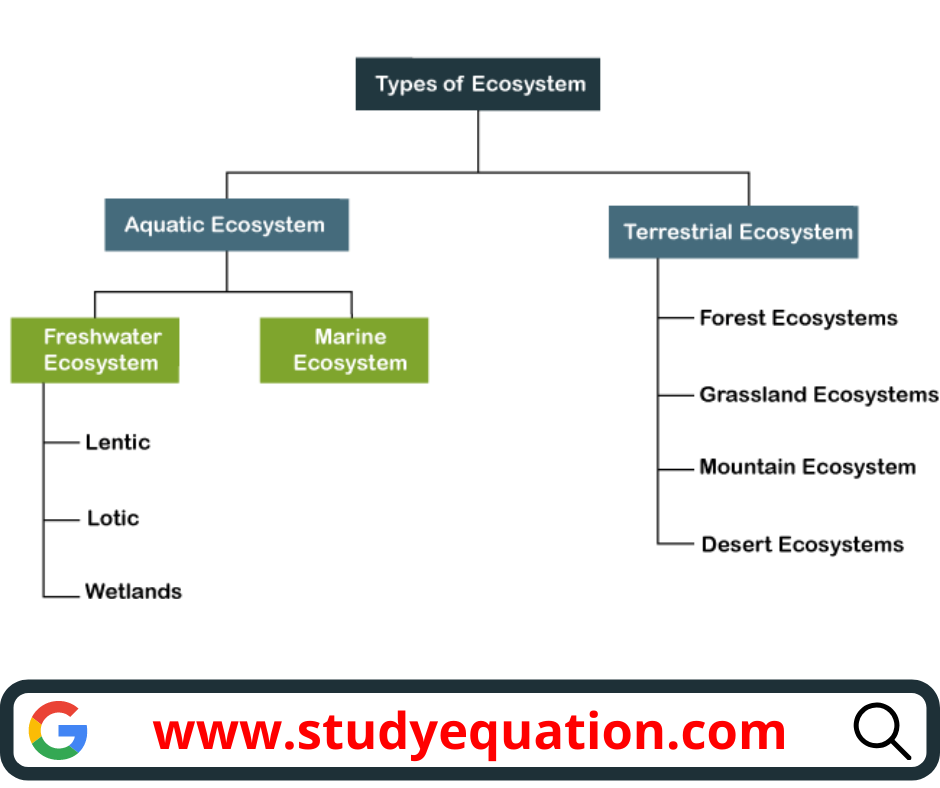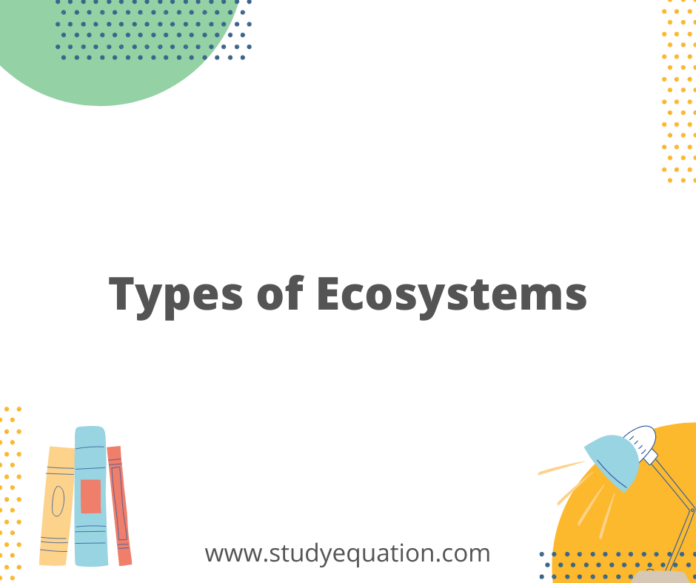The Ecosystem consists of all the living things around them like plants, organisms and animals, in a certain area, their physical environment and their interdependent relationships, with their non-living environments, like sun, climate, atmosphere, soil etc.
The basic foundation of the biosphere is dependent on the ecosystems. There are two major factors or forces that link these constituents together: first is the flow of nutrients inside the ecosystem and the second one is energy through the ecosystem.
An eco-system can be classified into different sects depending upon the things constituted in it. It can be natural and Artificial/Man-made. To explain, A natural ecosystem consists of species and plants and is a result of interaction between environment and organisms, so, they interact with each other and live together with combined efforts.
Table of Contents
All Types Of Ecosystems On Earth
A natural ecosystem is further divided into Terrestrial and Aquatic ecosystem, depending upon the composition, that is terrestrial ecosystem includes forest, grassland and deserts, etc which is land based and an aquatic ecosystem includes water-based ecosystem including freshwater and marine life.

- Terrestrial Ecosystem
There are various types of ecosystems subdivided in terrestrial ecosystem. Some are mentioned below: - Forest: – The forest environment is grouped based on the environment which can either be tropical, calm or boreal. In mild zones, the forest biological system can have a deciduous, coniferous sort or a blend of the two kinds of greenery. Around here, trees are seen as developing tall, with denser foliage and moist climate wherein species are tracked down right from the roots up till the covering.
- Grassland:- These are one of the major ecosystem existing. It is composed of grasses and non-woody plants. It is dominated by grass and trees and has abiotic and biotic components. These are found in both temperate and tropical regions.
- Desert: An ecosystem which receive less than 25cm in a year are considered as desert ecosystems. In such an ecosystem there is intense light, low water and high temperature and due to such conditions, the flora and fauna are poorly developed. There is a vast difference in the temperature in the desserts and it is very hot during the day and very cold during the night. Succulents, camels, and reptiles are most commonly found in the region and they adapt to the weather conditions. Sahara Arabia, Gobi deserts etc are some of the most commonly known desert ecosystems.
- Aquatic Ecosystem:
The marine biological system alludes to the oceanic environment containing saltwater and harbors a scope of animal groups. This environment is the vastest and the greatest biological system on the planet. They implant the maritime beds, yet additionally the salt bogs, flowing zones, saltwater swamps, mangroves, coral reefs and so forth. It is further divided into fresh water and marine ecosystem. - Marine ecosystem:– An ecosystem which has high level of dissolved salt is considered as marine ecosystem. Open ocean, deep-sea oceans and coastal marine ecosystem are included in such ecosystem. Over 70% of Earth’s surface is covered in water, and 97% of that water is salt water, marine ecosystems are the largest types of ecosystems on the planet. Marine ecosystem are complex but finely balanced just like all other ecosystems.
- Fresh Water Ecosystem: only 3.5% of the aquatic ecosystem is fresh water ecosystem. Since the percentage is small it is less extensive as compared to the salt water ecosystem. The main characteristic is that this ecosystem has low salt content thus making it a suitable climate for many aquatic animals to survive. The division of freshwater ecosystem is mainly into three types based on its region – Lotic, lentic, and wetland freshwater ecosystem.
- Lotic freshwater ecosystem:- In very simple words all the waterbodies which are moving in one direction are known as lotic freshwater ecosystem. Streams and rivers are examples of the ecosystem. These freshwater sources travel through different phases while their journey to the meeting point in a sea or ocean.
- Lentic freshwater ecosystem:- All the freshwater ecosystem which exist in stagnant water are called lentic freshwater ecosystem. Examples can be ponds and lakes.
Don’t Miss – How To Take Effective Notes
Frequently Asked Question About Types Of Ecosystems
Question – What are the 3 main types of ecosystems?
Answer – The three main type of ecosystem include terrestrial, ocean and freshwater eco systems.
Question – What are the 6 major ecosystems?
Answer – The six major types of ecosystems includes grasslands, forests, freshwater, marine, deserts and tundra.
Question – How many ecosystems are there on Earth?
Answer – There are many types of ecosystems existing on earth, but there are six major eco system on earth.
Question – What are the largest ecosystems?
Answer – Largest ecosystems include grasslands, forests, freshwater, marine, deserts and tundra.
Question – How many types of forests are there?
Answer – There are generally three kinds of forests. These include Boreal, tropical and temperate forests.





